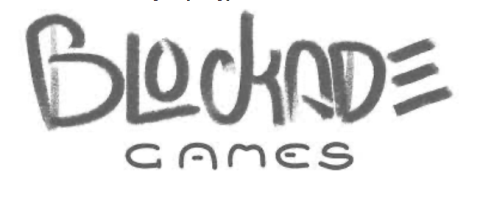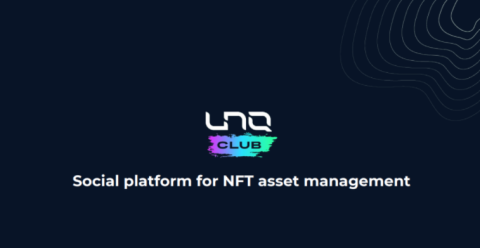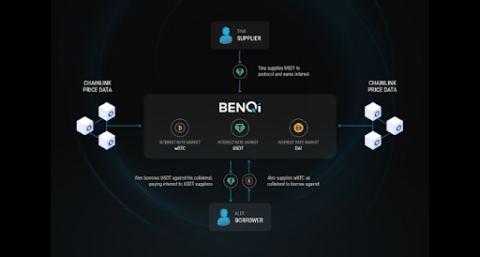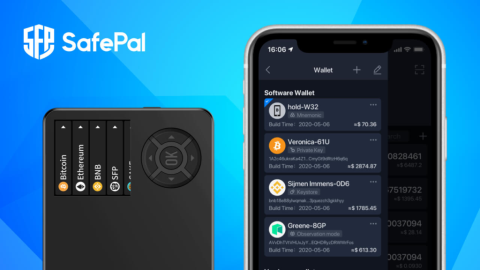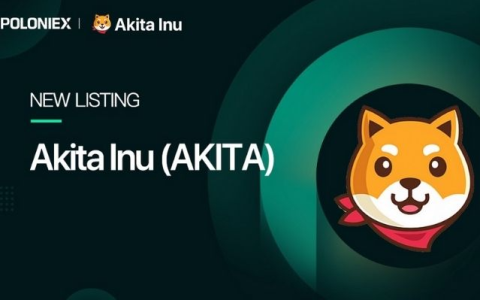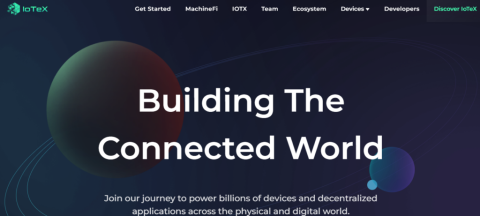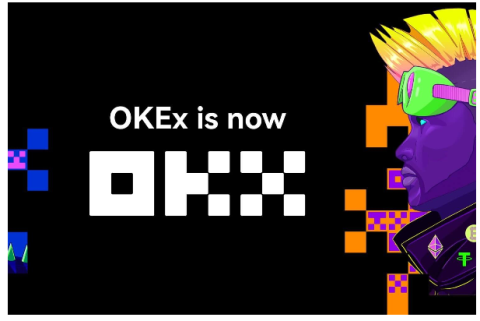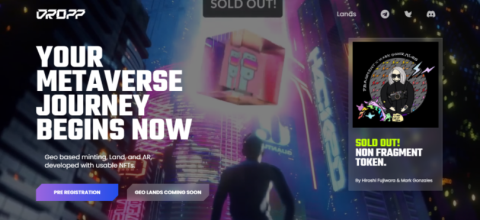What is thena? Discover the outstanding features of Thena and THE . token
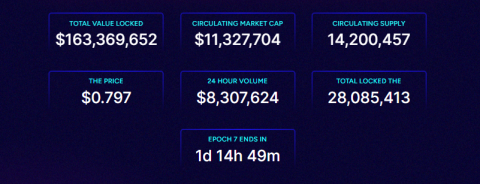
Ngoài PancakeSwap, hệ sinh thái BNB Chain còn có một AMM khác có TVL đạt 150 triệu USD chỉ sau hai tháng ra mắt, dự án này được gọi là Thena.
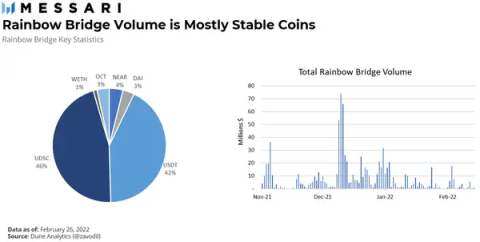
To continue the article introducing NEAR Protocol and the NEAR token , TraderH4 will provide all the necessary information about the NEAR ecosystem for readers to have a clearer view of the platform.
Before NEAR was officially released in October 2020, the project team launched the mainnet alpha in April 2020 and the beta version in September 2020. Although it is also among the latest mainstream blockchains, when compared to most other Layer 1s, participating in the NEAR ecosystem is much simpler.
When using NEAR, you sign up for a wallet through their website. But unlike MetaMask which is a browser extension, the platform's wallet is actually embedded in the browser itself. The reason is because NEAR is designed to look more like Web 2.0. Plus, you can simply create your own tokens with the NEAR wallet.
To support today's Web 3.0 users , Aurora partnered with Consensys to make Metamask compatible with NEAR, thereby making it easier for Ethereum users to interact with the protocol. With the ability to generate a single-use private key, NEAR sends the key to new users to access the NFT or some tokens to help them get familiar with the platform. They are also encouraging users to invite others using the “NEARDROP” method.
For users from other ecosystems, NEAR has bridges with major ecosystems such as Ethereum, Terra, and Cardano. The Ethereum bridge called Rainbow bridge is the most popular bridge to NEAR with nearly 750 million USD in TVL. Since the launch of the Rainbow Bridge, the daily transaction volume on the vast NEAR network has increased 40-fold. The majority of Rainbow bridge transactions are denominated in stablecoins with most of the volume spike at the end of December thanks to UST integration. The bridge has been tested by Consensys Diligence and ABDK Consulting before launch, giving users more peace of mind.
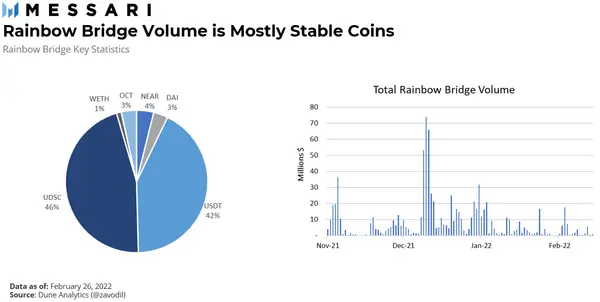
In addition to Rainbow, more than 100 tokens are supported in exchange through the AllBridge bridge. In October 2021, this bridge was audited by the consulting firm Hacken and found to be secure.
Over the past 2 years, the NEAR ecosystem has grown rapidly. Today, there are over 350 projects between NEAR and Aurora with more being added every day. In October 2021, NEAR launched a $800 million grant fund to develop the ecosystem. Funds will be governed by a newly launched DAO, with at least $350 million for DeFi, $100 million for startups, and $250 million for developers. This is one of the largest grants ever launched for Layer 1.
It is safe to say that developers will continue to passionately build on NEAR with increased funding. For smaller-scale developers, NEAR launched the MetaBUILD hackathon, awarding a prize of $1 million to grow the ecosystem. Below is a fairly comprehensive picture of existing projects.
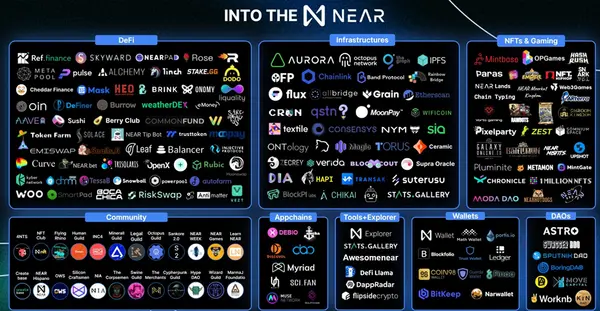
The infrastructure
With NEAR, Aurora and Octopus Network are the two most important infrastructure projects. NEAR has connections to industry standard backend technologies such as IPFS and Ceramic for decentralized storage, Chainlink for Oracle services, and The Graph for indexing. For block exploration, NEAR has Etherscan compatibility and built its own set of original block exploration: NEAR block explorer for mainnet and Aurorascan for Aurora.
A network of proof-of-stake (PoS) miners has also emerged to proxy NEARs. Compatibility has been built with the popular smart contract insurance platform Insurace. Overall, the ecosystem has been growing the infrastructure expected on larger and more well-known chains.
DeFi
DeFi on NEAR launched in April 2021. There are currently three major DeFi protocols on NEAR with more than 20 additional protocols on Aurora. In total they hold more than 600 million USD in TVL, NEAR ranked 17th in TVL among major providers. At the moment, decentralized exchanges Trisolaris (Aurora) and Ref Finance (NEAR) are the most popular applications. The third most popular application is Meta Pool – a premium liquid staking similar to Lido on Ethereum. In the short term, Curve and Sushi is planning to launch on NEAR.
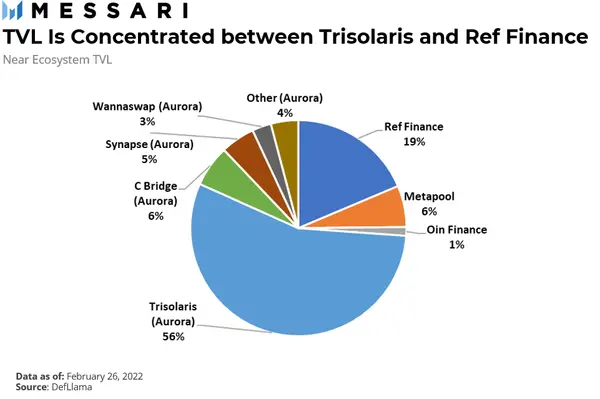
The most popular application in the vast ecosystem of NEAR (56% TVL) and especially on Aurora (75% TVL) is Trisolaris. Trisolaris is a decentralized exchange and fork of the popular SushiSwap protocol. Because of inheriting the speed and low cost of NEAR while paying fees in ETH, Trisolaris became more popular than Ref Finance. In addition, Trisolaris is also considering adopting the Ve token structure (this structure is well known through Curve).
The biggest DeFi application on the main NEAR chain (which accounts for over 70% of the TVL there) is Ref Finance. In the broader NEAR ecosystem (including Aurora applications), Ref accounts for about 19% of TVL. Ref Finance is an automated market maker that allows permissionless trading of any token on the NEAR network. To provide liquidity, users need to earn REF tokens. Similar to other major DEXs, Ref Finance is regulated by the DAO. The protocol raised $4.8 million in February 2022 from Jump, Dragonfly, and Alameda.
NFTs and games
NFTs and games are becoming increasingly popular on NEAR due to low transaction costs and high latency. Among them, Mintbase is NEAR's largest NFT platform. The platform builds on the traditional buying and selling of NFTs between users to enable the division of royalties or payments among multiple wallet holders. They also took storage concerns in the NFT industry seriously and partnered with Arweave for decentralized storage.
At its initial launch in the second half of 2021, the NFT Hip Hop Heads collection traded in over $0.5 million in volume on Mintbase. Mintbase also partnered with popular artist DeadMau5 to launch NFT in December 2021 on their platform. Despite the successes that have come from these projects, the Mintbase user base is so far not guaranteed to be stable.

Due to NEAR's unique account structure, NFT builders can sell their accounts to third parties if they wish. As a result, the new account holder is provided with a future stream of revenue from the perpetual sale of that NFT. However, this transfer is not straightforward on other platforms. For example, the popular Ethereum-based Pudgy Penguins NFT tried for almost three months to switch owners of their project but continued to face many hurdles after that.
Games on NEAR are still in the early stages of development, lots of announcements have been made but very few games have actually been released since Q1 2022. Web 3.0 game studios have raised millions of dollars. to build games on NEAR. With a plan to launch more than 500 games on NEAR by the end of 2022, OP Games has raised $8 million. Another studio, Vorto Gaming, raised $4 million.
Developer growth on NEAR in 2021 is among the most impressive among Layer 1. NEAR is the second-fastest protocol ever for over 400 developers, second only to BNB. In the total number of developers in 2021, NEAR has grown more than 4 times and is second only to Solana. Growth continues into 2022 with over 500 other active developers achieved in January and February.
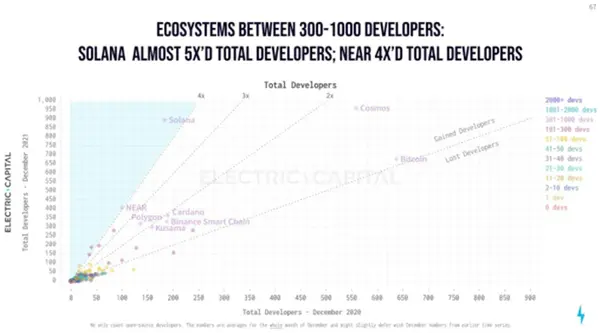
These developers don't just support small projects. In 2021, NEAR ranks third in growth for full-time developers with 291%. Terra and Solana slightly outperformed NEAR with growth of 313% and 307% respectively. With over 100 full-time active developers, NEAR is second only to Cosmos, Solana, Polkadot, Ethereum and Bitcoin. The growth in 2021 is mostly in the time before the announcement of the ecosystem development fund.
Besides, the NEAR Treasury is also built to support the development of the ecosystem in the long run. Through authorization of 10% transaction fees, the fund has a built-in funding mechanism that is reinvested in the development of the ecosystem. To lay the foundation for the sustainable development of the ecosystem, NEAR also organizes coding competitions for high school and college students.
In the Layer 1 space, the race is on between new and old protocols to achieve maximum network speed at low cost and maximum security. Each competitor has taken a different approach to maximizing each of these vectors while making a series of centralization tradeoffs. Ideally, the best blockchain would be fast, secure, widely used, and completely decentralized.
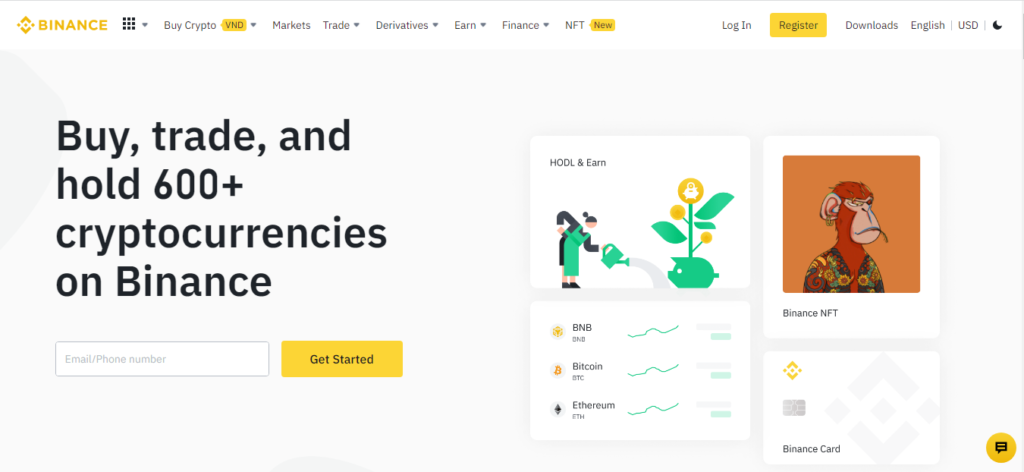
Many throughput and latency statistics are theoretical as the majority of these blockchains do not reach their maximum capacity as advertised. However, NEAR currently ranks first in many key metrics, including transaction costs, maximum transactions per second, and staking returns. NEAR is lagging in many decentralization categories, including the number of validators, the cost to run a node, and the Nakamoto coefficient.
NEAR plans to decentralize as it grows, unlike some other centralized competitors like BNB. NEAR is gradually adding shards as the network grows. NEAR rewards validators who are working on less popular shards thus incentivizing smaller groups of validators.
Compared to its closest competitor Solana, which launched around the same time, NEAR is actually cheaper on a price-to-revenue basis and almost identical when it comes to revenue growth. Solana's market value is still 3 times higher than NEAR and 8 times higher at certain points.
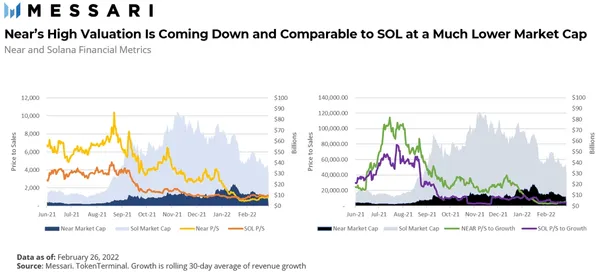
User activity drives token prices in the short and long term. When looking at key metrics like user and developer activity, the key stats appear to have stabilized. Trading volume has reached a high of around 300,000 per day, while active accounts are 20,000 per day.
A limiting factor on the demand side for the hard-to-quantify token is that NEAR is currently only listed on a few exchanges: Binance, Upbit, Kucoin, and Huobi. It is not listed on Kraken, FTX US, BitStamp or Coinbase. The main competitors are Avalanche, Solana and Cardano which are listed on all these exchanges.
The main problem with listing seems to be just the sheer number of new token exchanges that have to list at the moment. There is also a lot of engineering work to be done for the exchange to integrate a new protocol and maintain accurate pricing data, especially when it comes to new and rapidly changing technology like NEAR. The lack of listings on major exchanges naturally limits the number of buyers, especially those in the United States.
Finally, as we discussed earlier, NEAR has messed up their token unlock schedule, which has created constant selling pressure. According to the project documentation, it seems likely that the majority of token unlocking will be completed by October 2022, 24 months after the mainnet launch. Investors with unlocked tokens will cost less than 0.5 USD. At today's prices, they would immediately be able to make 20x profits, so it's no surprise that this dynamic has put downward pressure on NEAR.
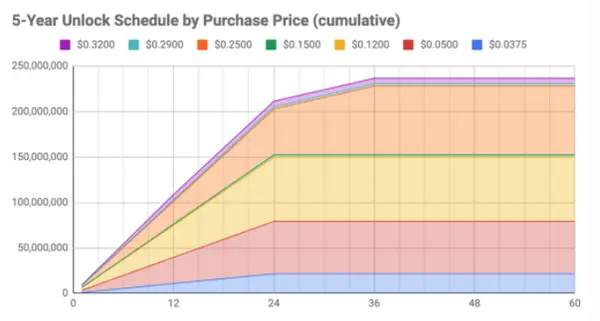
All Solana tokens were unlocked in early January 2021 and the majority of Avalanche tokens were unlocked in August 2021. After some initial downward selling pressure, both tokens performed quite well.
Centralize validators
At the moment, NEAR has about 100 nodes that confirm transactions and this number has doubled since the end of 2021. Being a validator is also quite expensive at around 1,000,000 USD, the number This decreased in November 2021. NEAR has committed to reducing the cost of validators and increasing the total number of validators. While NEAR is on the right track in terms of cost and decentralization, it still relies heavily on delegating to smaller stakers.
It's easy to move
Most of the activity in the NEAR ecosystem is on the Aurora EVM compatible application. While it's great that developers can easily port apps, this works both ways. In fact, $500 million of the $600 million in TVL is on Aurora. Developers can use their EVM-compatible applications and use them as they please.
This EVM startup model has had mixed results. For example, Polygon maintains almost twice as many cross-chain developers as mainstream developers on the Polygon ecosystem over 5 years. So does Avalanche after 5 years. Celo has managed to support their lead developers so that they surpass cross-chain developers. EVM compatibility is great, but then developers should be encouraged to build native apps there.
Marketing and brand awareness
NEAR hasn't been marketed much and raised awareness about the platform. Solana launched at the same time, the attention as well as the price increase is fundamentally different. NEAR has consistently created strong technical content but has not found a direct connection to non-technical people. Part of this is because the platform lacks a prominent leader that is followed and supported by many of the other Layer 1s: Ethereum (Vitalik), Terra (Do Kwon), Avalanche (Emin Gün Sirer), Solana ( via Sam Bankman-Fried) and BNB (CZ). Another reason could be from the lack of listing of NEAR on major US exchanges.
Codebase
In terms of developers, NEAR is in direct competition with Solana. While NEAR has many languages that can be coded, the main one on Solana is Rust. The demand for encryption is very high leading to fierce competition between these two platforms. Both protocols are well funded by venture capital but in terms of price Solana is higher than NEAR and has more media exposure and is generally attracting more developers.
Compete
NEAR has many features that appeal to users, but it seems that users are only slowly entering the ecosystem. NEAR hopes that developer returns and venture capital will fuel this momentum, but so far that has been limited.
Lack of testing
NEAR has amazing specifications but once the network scales to a large number of transactions, will the network be able to withstand the throughput? Solana makes claims of very high throughput. NEAR's scalability will need to be tested before it can be trusted by users.
Current and future development for NEAR is coordinated by the NEAR organization. The NEAR platform currently has only three board members who will guide the future of the protocol. The goal in the future is to use DAOs and guilds to empower the community in the future. Guilds are a rather unique feature of NEAR, although they function in a similar way to DAOs in that they are organized, decentralized parties, gathered around a common purpose.
Teams are different in that they really focus on uniting around a common skill set or passion and then leveraging that to contribute to the organization or to accomplish some goal. An association can contribute to multiple DAOs. They function like different departments of a company (i.e. accounting, marketing and human resources). The first community empowerment started with the NEAR fund's handover of its Medium site.
In terms of technical development, NEAR's roadmap is public and constantly updated. NEAR plans to continue to increase the number of validators, so the barrier to entry to become a validator is lowered. NEAR also plans to continue to increase the number of shards as the network grows. The team is also looking to enable some gas fee improvements as usage increases.
The team and technology behind NEAR are extremely high quality, but implementation and market adoption still present certain risks. However, if we live in a diverse world then NEAR must have a place. With venture capital investment, growth growth, a stellar team, and best-in-class technology, NEAR has a compelling investment opportunity, despite some of the difficulties it faces.
Ngoài PancakeSwap, hệ sinh thái BNB Chain còn có một AMM khác có TVL đạt 150 triệu USD chỉ sau hai tháng ra mắt, dự án này được gọi là Thena.
Blockade Games provides a platform that allows developers to create blockchain games. In addition, Blockade Games also creates many interesting free games.
UNQ Club is a project that provides a blockchain platform that allows investors to collect and manage existing NFT assets.
BENQI is one of the important pieces of the Avalanche ecosystem. Join TraderH4 to find out what BENQI (QI) is as well as detailed information about the QI token.
In addition to a cryptocurrency storage wallet, SafePal is also known to many investors for its SFP tokens and airdrop events with attractive rewards.
The fever from Akita Inu in the Crypto market in the past time has created a great buzz along with the rapid development of the "dog house token".
What is IoTeX? This is a blockchain built and developed in conjunction with the Internet of Things (IoT). Join TraderH4 to learn this article.
What is OKB? OKB is an exchange coin of OKX and the OKX Chain blockchain. Let's learn about OKX and OKB exchanges with TraderH4 in this article.
DROPP GG brings an innovative and novel idea to provide an NFT mint platform based on geographies outside of the real world.
CronaSwap is a DEX built on Cronos Chain, which has a similar model to Uniswap.
